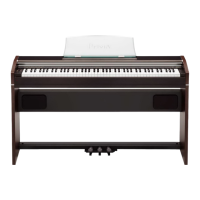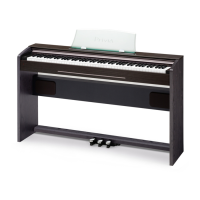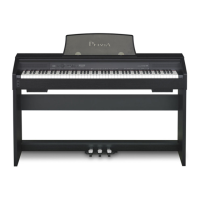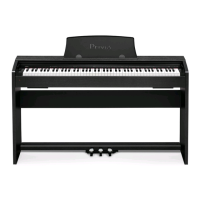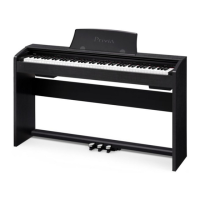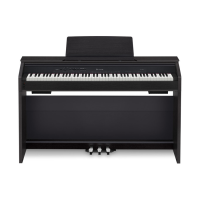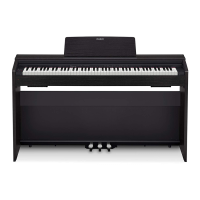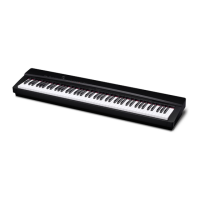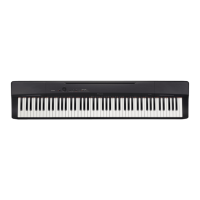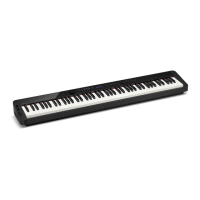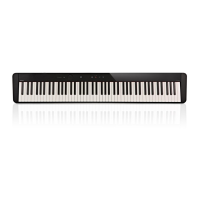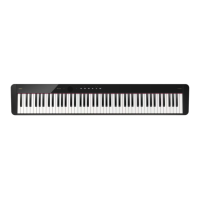EN-35
USB Flash Drive (PX-870)
Your Digital Piano supports the following USB flash
drive operations.
■ Supported USB Flash Drives
Capacity: 32GB or less recommended
• Operation of the above type of USB flash drive has
been confirmed, but this does not guarantee
operation.
• Use a FAT (FAT32) format USB flash drive.
•You may not be able to use a USB flash drive that is
recognized as multiple drives on your computer.
• A USB flash drive that is recognized as a CD-ROM
on your computer is not supported.
• A USB flash drive with an anti-virus function and/or
security functions is not supported.
■ Data Types Supported by the Digital Piano
■ Save and Load Data Formats and Capacities
* Can be converted to a standard MIDI file (SMF
format 0, file name extension .MID) and saved.
• Since audio data can be directly recorded to and
played back from a USB flash drive, there is no need
to store or load it into Digital Piano memory.
Direct recording of keyboard play to the USB flash
drive as audio (.WAV) data
See “Recording to a USB Flash Drive (Audio
Recorder) (PX-870)” (page EN-21).
Direct playback of audio (.WAV) data stored on a
USB flash drive
See “Storing Standard Audio Data (WAV Files)
to a USB Flash Drive” (page EN-36) and “Playing
Back Audio Data Stored on a USB Flash Drive
(PX-870)” (page EN-17).
Using the Song Recorder to save recorded song
(.MID) data to a USB flash drive
See “Saving a Recorded Song to a USB Flash
Drive” (page EN-38)
Loading of song (.MID, .CM2) data stored on a USB
flash drive to a Digital Piano user song number
See “Loading Song Data from a USB Flash Drive
into Digital Piano Memory” (page EN-40)
Direct playback of song (.MID, .CM2) data from a
USB flash drive
See “Simple Play Back of a Song on a USB Flash
Drive” (page EN-42).
See “Formatting a USB Flash Drive” (page EN-37).
See “Deleting Data from a USB Flash Drive” (page
EN-41)
.MID : Can be stored in Digital Piano memory, on a
USB flash drive, or on a computer (connected
via USB).
.CM2 : Can be stored in Digital Piano memory, on a
USB flash drive, or on a computer (connected
via USB).
.CSR : Can be stored in Digital Piano memory or on a
computer (connected via USB).
.WAV: Can be saved on a USB flash drive.
Data Type
Description
(File Name Extension)
Supported
Operations
Save to
USB
flash
drive
Load
from
USB
flash
drive
User songs
(page
EN-46)
One of the following two
types of music data
1. CASIO format data
(CM2)
2. Standard MIDI files
(MID)
SMF Format 0 or
Format 1
– O
Songs
recorded
with song
recorder
(page
EN-18)
Song data recorded on
this Digital Piano (MID)
O* –
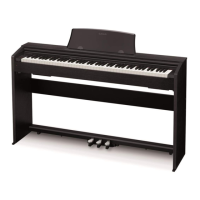
